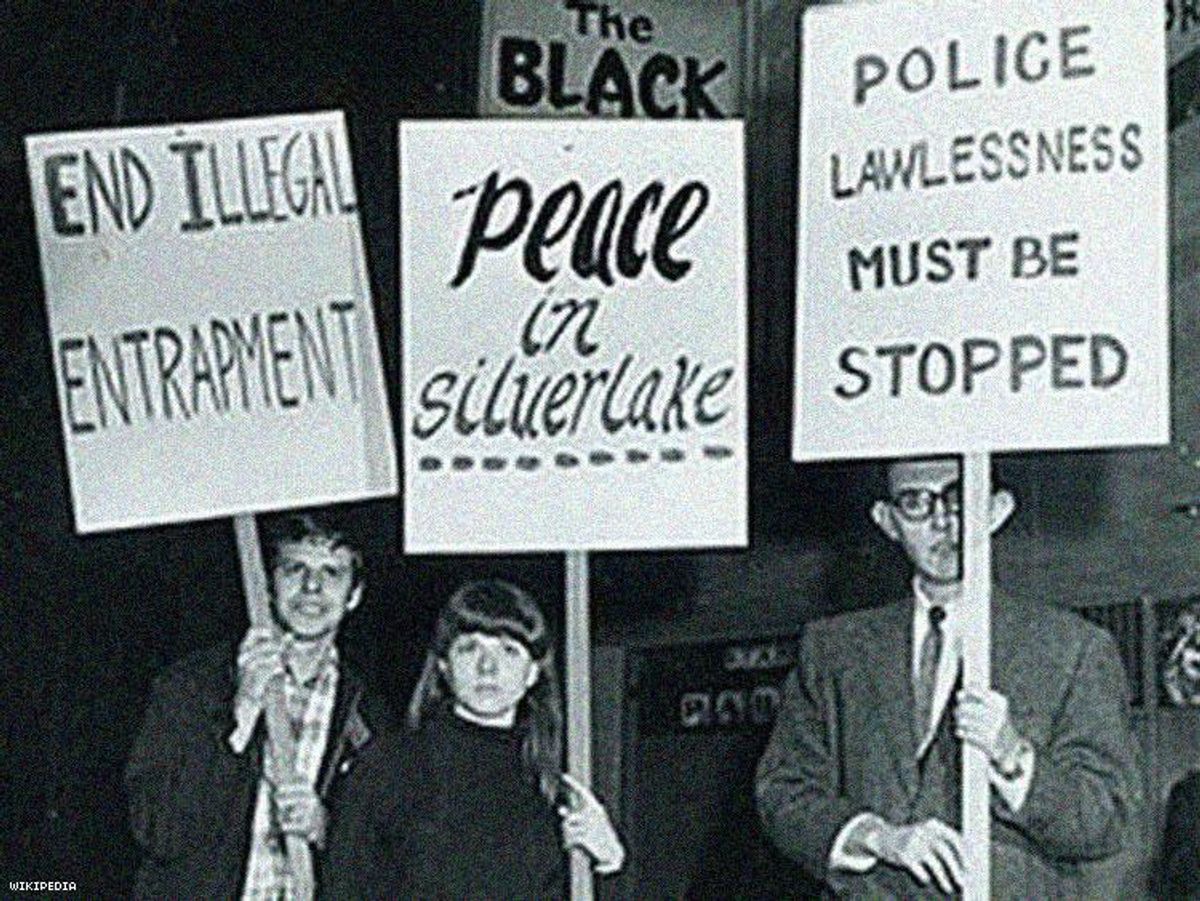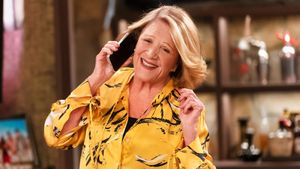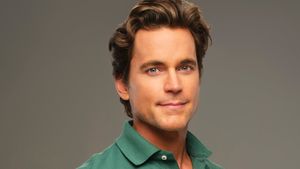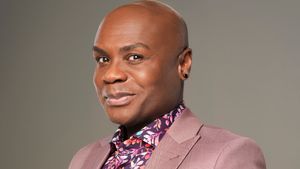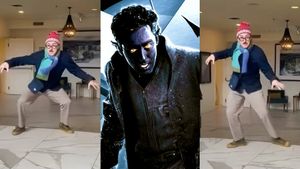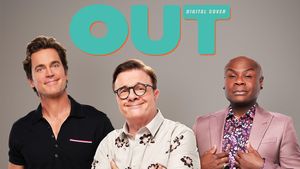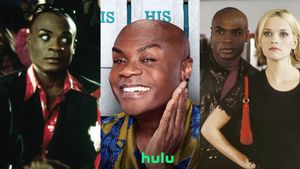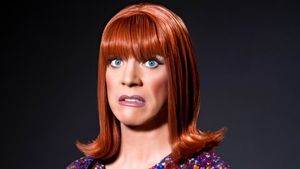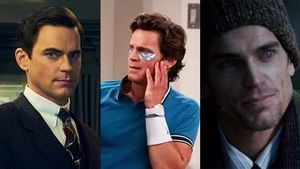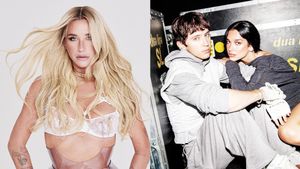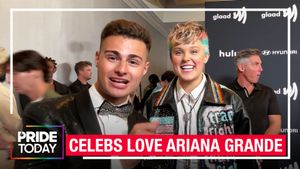All Rights reserved
By continuing to use our site, you agree to our Private Policy and Terms of Use.
It used to be illegal for two people of the same gender to kiss in Los Angeles. If you were found guilty of what police called "lewd conduct," you faced not only a fine. Men caught expressing affection for each other -- sometimes as little as a peck on the neck -- would be registered as sex offenders for the rest of their lives.
These were the stakes on January 1, 1967, when plainclothes police officers raided the Black Cat Tavern -- a gay bar in L.A.'s Silver Lake neighborhood -- as revelers rang in the New Year. The raid was brutal, violent, and indiscriminate. Twelve people were arrested.
Among those taken into custody were the Black Cat's straight bartender and a brother and sister who shared an affectionate peck at midnight. They thought the woman was a man dressed in drag. Two customers who were about to enter the tavern saw the scene that had erupted and fled to New Faces, a neighboring gay bar, for safety. The policemen followed the men and demanded to speak to the owner. The bar was run by Lee Roy, a woman, but the cops heard it as a man's name: "Leroy." The officers "went up to her, spun her around, and punched her in the nose without asking any questions," says David Farah, a gay historian of the period.
Trending stories
"They beat her up and broke her collarbone," Farah says. "When they realized it was a woman, they left her on the sidewalk in front of the bar without doing anything for the injuries they had caused."
Those arrests, which would lead to six convictions, were just one of many antigay sting operations that highlighted the extreme tensions between police and Los Angeles's LGBT community. For instance, Howard Efland, a nurse, was fatally beaten March 9, 1969, during a raid on the Dover Hotel, a bathhouse that was a favorite meeting point for gay men. Farah says Efland was "beaten to death" after being dragged down three flights of stairs. He was taken to a hospital, where he died of a ruptured spleen.
Farah's husband, Alexei Romanoff, says the Black Cat raid had a galvanizing impact on LGBT Angelenos. On February 11, 1967, the longtime gay activist helped organize a demonstration outside the Black Cat to protest police brutality. An estimated 500 to 600 people showed up, an unprecedented number, holding signs reading "Blue Fascism Must Go" and "Silence = Death."
"We were fighting a status quo which said that we were criminals," Romanoff says. "At that time you could be fired from your job just for being gay. You could be put in a mental institution because you were considered to have a mental disease. You had to hide. We were mad, and we weren't going to take it anymore."
Romanoff was named the grand marshal of this year's Pride observance in Los Angeles, which has taken on a different tone than previous celebrations. In March, organizers at Christopher Street West, who plans the annual June festivities, announced that the parade would be canceled in favor of a Resist March. That demonstration is intended to follow in the footsteps of January's Women's March, in which hundreds of thousands of people came out to protest the Trump administration. It was the largest protest in U.S. history, with participants marching in all 50 states -- as well as at least 55 cities outside the United States.
The demonstrations of the 1960s and '70s, however, are a reminder that Pride has always been about resistance. A lot has changed in the 50 years since Los Angeles's LGBT community first fought back against police violence, but queer and transgender people are still fighting for their basic civil liberties -- and even their lives.
The Resist March began by accident. On January 26, Brian Pendleton, a Los Angeles activist and philanthropist, saw the news that there was going to be an Equality March on Washington, D.C., June 11, the same day as L.A. Pride. The idea that the East Coast would be marching for LGBT equality while the parade was business as usual on the West Coast "didn't sit right" with him, Pendleton tells The Advocate.
"Parades are for progress, and we're not really feeling that right now," he says.
Pendleton posted to his Facebook page that day that instead of holding a parade, he would like to see Los Angeles march for human rights. His social media posts, Pendleton explains, usually get "about 50 likes." But this one went massively viral, amassing over 30,000 likes within the week. That excitement spread like wildfire. Within a matter of weeks, Christopher Street West announced the new format of the parade, and Pendleton was put in charge of organizing it. His kitchen was suddenly full of friends, activists, and community organizers tasked with radically rethinking what Pride looks like under Donald Trump.
Typical parades are contained to the heavily LGBT city of West Hollywood, but the Resist March this Sunday will begin outside the Dolby Theater in Hollywood. (West Hollywood is an independent city; Hollywood is a neighborhood of Los Angeles.) Instead of watching the action from the sidelines, Pendleton wants attendees -- expected to number as many as 100,000 -- to march the three miles to West Hollywood with the crowd.
The starting point has a special significance for Los Angeles's LGBT population: It's where the first Pride parade took place in 1970.
Pendleton said that as the current administration attempts to rollback the community's rights, it's only fitting to return to Pride's roots. Since Trump's inauguration in January, his administration has consistently chipped away at protections for queer and trans people, whether it's LGBT workplace protections, data collection on seniors and homeless youth, or affirming treatment for trans students. Most recently, Secretary of Education Betsy DeVos said it wasn't the federal government's job to protect LGBT youth from bullying and harassment in the classroom.
"In 1970, we had to fight in court to get a permit to have the first L.A. Pride," Pendleton said. "We're fighting different battles, but it's sad to me that from 1970 to 2017, we're still having to fight. We resisted then and we're resisting now."
Rev. Troy Perry, one of the organizers of the inaugural parade, says the city had some impossible demands before giving its permission for a Pride event. Organizers would have to put up $1.5 million in bonds. That money, police said, was intended to cover any expense from windows being broken "when people start throwing rocks" at the marchers, as well as the cost of paying overtime for officers assigned to the event. But Perry says the words of the police chief, Edward M. Davis, was the most damning of all.
"I'd rather see thieves and burglars walking down Hollywood Boulevard holding a parade than this bunch of homosexuals," he reportedly told Perry.
With the help of the American Civil Liberties Union, LGBT activists would win the right to hold the 1970 parade without putting up the outrageous sum. The Pride event would be one of three held that year -- there were marches in San Francisco and New York City -- but Perry says the L.A. parade was something special. Although the police warned that onlookers would throw things at the revelers, 1,500 people showed up in support of the city's queer and trans population. There was even a dog section in the parade.
"When I turned the corner and saw all the people who had lined up to watch us march, it was incredible," Perry says. "I never felt so proud in my life. It made me feel like I could do anything."
The parade was meant to be celebratory, marking the one-year anniversary of the Stonewall riots in New York City. But given the enormous pain coursing through the veins of LGBT Angelenos, the parade couldn't help but be overtly political. On June 28, 1970, marchers showed up dressed in fairy wings, pretending to flee the police who continued to brutalize them and stand in the way of their right to exist.A float from Gay Liberation Front featured a gay man nailed to a cross, an overt reference to Christian imagery. The Jesus figure held a sign reading "In Memory of Those Killed by the Pigs."
"We've always had demonstrations in our gay prides worldwide," Perry says. "This resistance march is going back to that parade then."
Although LGBT Americans has come a long way in the past five decades, there's much that still hasn't changed. You can still be fired from your job in 28 states for being gay, and 30 for being transgender. Farah moved to Los Angeles because in his home state of Michigan, it was difficult to be open about being gay. His partner wanted to move in with him, but for them to live together, the men would have had to leave the house at different times -- because you could be evicted for being gay. There's still no federal law on the books preventing housing discrimination on the basis of sexual orientation and gender identity.
"Still in Michigan today, I could be fired for being gay and I can be denied housing," Farah says. "That's not 50 years ago. That's right now."
What gives these LGBT pioneers hope, however, is how much has come out of the organizing during Los Angeles's most violent years. A newsletter briefing the queer and trans community on weekly protests would morph into The Advocate. At least 60 cities will be participating in this year's Resist Marches, including Seattle, Chicago, and Austin. Perry was invited to speak last month at a Pride event in Cuba, where Fidel Castro's government locked up gay men in the 1960s.
Romanoff has taken part in every Pride parade in Los Angeles -- even via wheelchair after he had surgery -- but there's one moment that will always stick with him. During that first celebration in 1970, several mounted police officers were on the scene to control the crowds. As Romanoff passed by, one of the men turned his horse sideways and flashed the "V for victory" sign at him.
"I don't know his name or anything about him, but he was there," Romanoff says. "This man had to be closeted in order to be in the police department, but he took the risk of giving me a signal to cheer me on."
Whether it's 1967, 1970, or 2017, Pride will always be a reminder that the most powerful form of resistance is having the courage to be visible and to be yourself.

